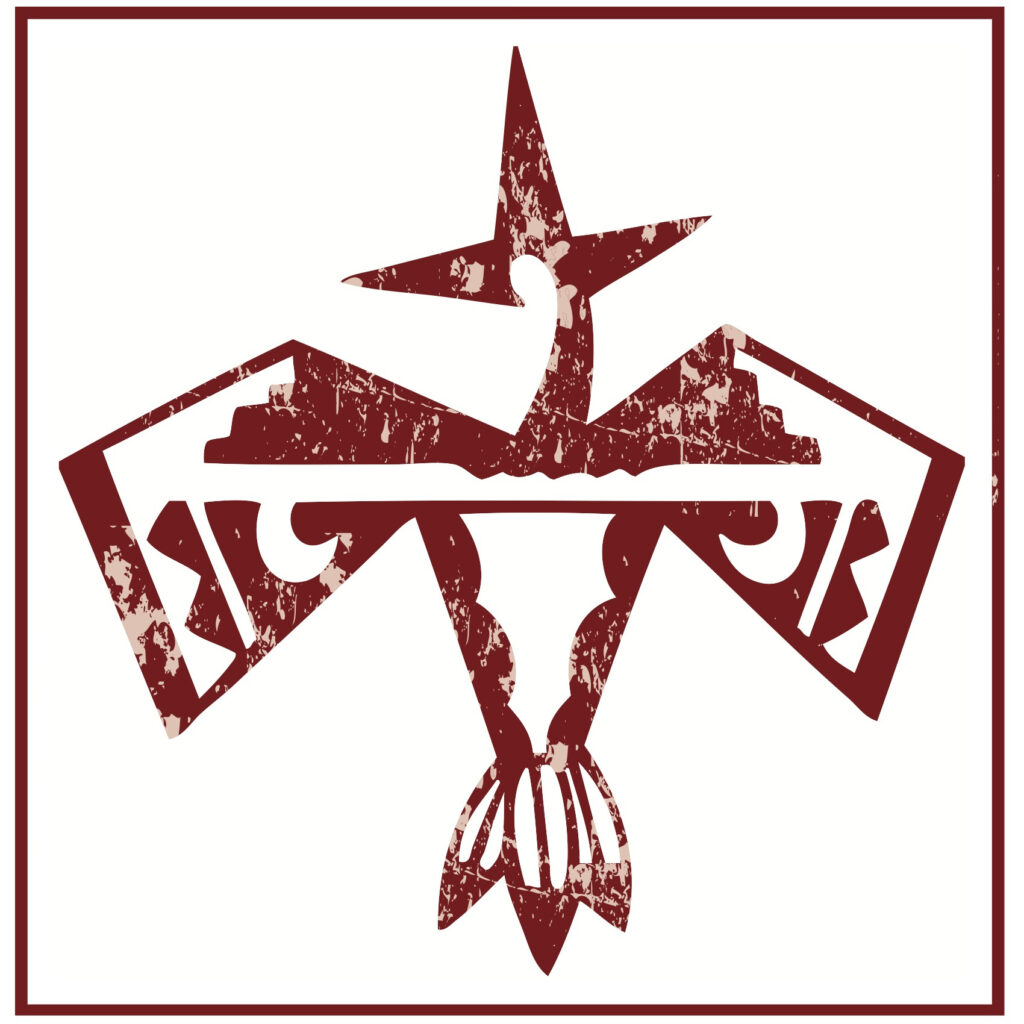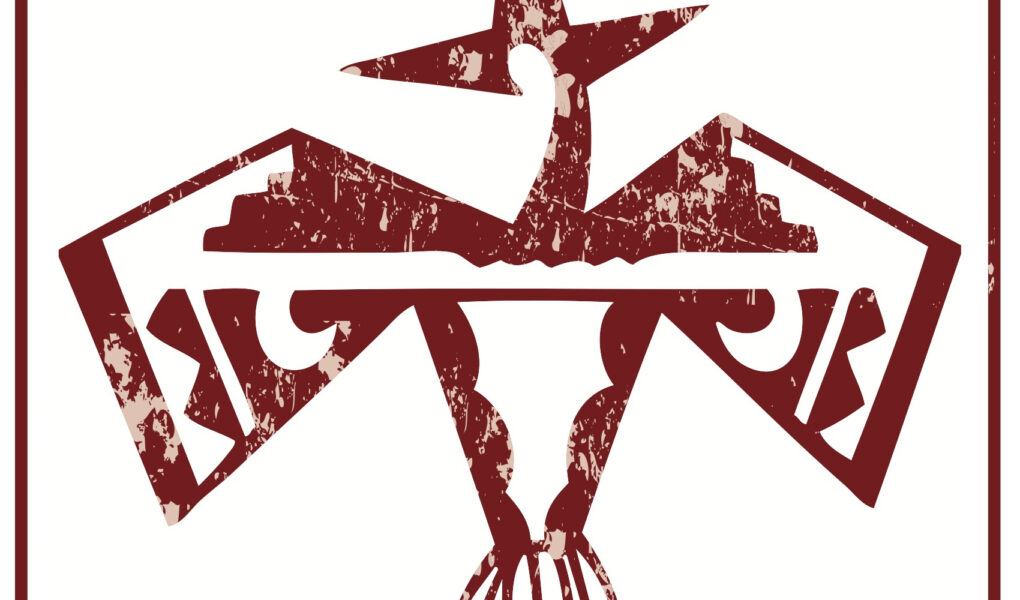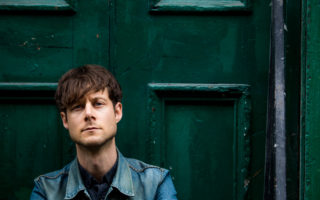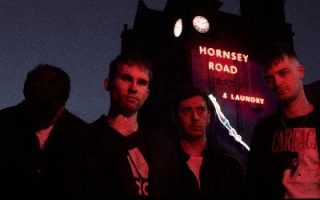‘My Revolution’ is a powerful release from Red Bird Rising and features Ukrainian musicians Taras Kuznetzov and Ana Pshokina. It was written by Diedrich Donald Weiss and the story behind the release is profound and moving, demonstrating the power of music and a bit of determination.
Composer Diedrich Donald Weiss wanted to do something, in response to the invasion of Ukraine by Russia. You might consider an artist from Minneapolis, MN living in Colombia, South America has little influence in Ukraine but Weiss wrote ‘My Revolution’ and shared it with producer, musician and mixing engineer Mariano Cukierman, an Argentinian whose studio is in Buenos Aires. He agreed it would be right to find an artist in Ukraine to sing it.
Weiss discovered Taras Kuznetsov’s profile on SoundBetter. He liked Kuzentsov’s vocal and found out he and his wife Ana Pshokina are experienced live performers and studio recording artists. There was just the issue of recording during a war. Weiss contacted Kuzentsov to learn that his studio was accessible and Kuzentsov felt the music fit his voice and taste and that the lyrics of ‘My Revolution’ authentically expressed his experience. The project gained momentum.
Back in Buenos Aires, Cukierman took Weiss’ demo of ‘My Revolution’ and recorded rhythm guitars, organ, electric piano, and scratch bass guitar. He added fellow Argentinian Fernando Moreno on drums while keeping Weiss’ electric guitar riffs, electric piano intro melody and backing vocals. Cukierman created a polyrhythmic rock groove with uniquely voiced guitar parts in a version that elevated the core of the track’s rhythm bed.
‘My Revolution’ came to realisation in Odesa as Kuznetsov recorded lead vocals with Ana Pshokina recording bass guitar. Kuznetsov also recorded a demo string arrangement to augment the dramatic movements of the track.
Violinist Megan Gould, who lives in New York, wrote the string arrangement, performing on violin and viola with session musician Eleanor Norton on cello. Cukierman mixed the song over four sessions with Weiss participating over video chat with notes he and Kuznetsov prepared. Cukierman in real-time executed the vision they together had evolved.
Weis decided early on that a video could serve to express Kuzentsov’s experience and shared his idea with Cukierman who connected Weiss to filmmaker Flor Giardino in Buenos Aires. Giardino had recently made a short film with dancer and choreographer Melina Ascune called ‘Exclama’. When Weiss viewed this film on Giardino’s website, the connection between the dance and the song’s lyrics was uncannily synchronistic. Giardino and Ascune gave Weiss permission to use the ‘Exclama’ shots in the video.
Kuznetsov and Weiss then collaborated on the story for the video. Kuznetsov and Pshokina shot in multiple locations in Odesa. From here, Weiss edited the video using the ‘Exclama’ dance shots, the Odesa shots from Kuznetsov and Pshokina, and footage found from sites such as Dattalion, which is an archive of video stories documenting the invasion, and Ukraine Today on Telegram, the frequently used social media site for people sharing about the invasion. Giardino then completed the final master of the video.
It is difficult to imagine shooting film and recording music during the war in Ukraine, but that is just what these incredible musicians did. The video production in Odesa called for the video to be shot in public, both during the day and at night. The bombings by Russian missiles to Odesa’s energy infrastructure after the explosion on the Crimea Bridge made collaboration on the video more difficult with Kuznetsov having less access to electricity and the internet. But in the times when there was both electricity and the internet, Kuznetsov and Diedrich fulfilled the visual story that they felt needed to be told.
What is striking about this video and music is how artists from across the globe, given a unifying cause and a profound connection through war, found a way to collaborate and produce something deeply moving.
Weiss says, “ I have a world-worn faith in the power of music to affect people’s lives positively. It’s this that inspired me to write ‘My Revolution’ in response to the Russian invasion of Ukraine. It may be naive to think a song could in any way substantially affect something as dominating as this horror, yet it was my answer to the inner question, ‘what can I do?’……
‘My Revolution’ is about a man stuck against a force dominating his life, and his dreams, and adapting his mundane but simple comforts into necessities to cope. And this man is not fictional. He is Taras Kuznetsov, a 32-year-old full-time remote freelance vocalist, producer, arranger, audio engineer, drummer, and pianist. The time of the scene of the song is March 2022, about 6 weeks after the first Russian military intrusion of sovereignty. The location is Odessa, the port city crucial to access to import and export of vital goods and the artistic soul of Ukraine.
“Because Kuznetsov is the subject of ‘My Revolution’ and the lead vocalist, I wrote the lyrics as if I were him, using factual information of what he is contending with in this invasion. The chorus which sings, ‘my revolution begins in my world within’ is anthemic and specifically an answer to the question, “what can I do?”. The external world is much beyond his control. But Kuznetsov’s inner world is where he can find stability and strength to contend and keep moving forward in his life and as a person. He can change, adapt, resist, and grow. He sings in the second verse, ‘good, good they haven’t yet bombed my home, but I cannot go out, so I rule my own house, work like a bee in honeycomb’…….”
The song is very powerful, and the accompanying video makes it more so. From the darkness of the opening to the shouting people on the streets and the burning images of a country under attack to a shot of the moon, implying there is beauty even among the destruction. People in underground shelters, tanks, missiles, rockets, and explosions, the senses are overwhelmed by what war does to a country and its people. The contrasts between brief images of a couple enjoying a peaceful time to the fiery explosions of battle are profound. The beautiful dance of Malena Ascune is emotional and creates a sense of reaching, hoping, and expressing the desire for peace.
For Kuznetsov, music is his way to express awareness of what is happening – battles, rapes, torture, and tension. He needs to respond and does this through music. Acune expresses the tension exquisitely in her dance sequences, where she struggles and leans into the fight. Pshokina supports on bass and morally – she is with her husband and they remain together through these awful times.
It is worth reading the lyrics to understand where these musicians are coming from:
There are days I dream of leaving for good
Passport be damned, take all I can
Get out now like I should
Poor me, my life is stuck underground
Well I was given a gun, I can take out some Russian
Bring those reptiles down
My revolution, My revolution begins
My revolution, My revolution begins in my world within
There are times you know we all need a rest
Can’t lose my mind, checking the headlines
Play my piano instead
Good good, they haven’t yet bombed my home
But I cannot go out, so I rule my own house
Work like a bee in honeycomb
My revolution, My revolution begins
My revolution, My revolution begins in my world within
If it wasn’t for you, you are enough, my love
If it wasn’t for you, you are enough, my love
I can’t just go along, I can’t just sing this song
My revolution, My revolution begins
My revolution, My revolution begins in my world within
There is magic about this recording – it is neither exceptional vocally nor musically and yet it is so very exceptional because it came about from the almost impossible. One man in Columbia had a vision and people from several different countries found a channel to express their feelings about war. Two musicians at the heart of the war connected with the group and somehow managed to shoot video, and record music, and the serendipity of internet connections, electricity, and everyone involved being available at similar times cannot be ignored – it is as if this was meant to happen.
The techniques had to be adapted, and the way the music was recorded and video shot had to be done in the moment and somehow it came together and worked. Knowing the background makes this single special and allows it to reach deep into the hearts of those who will listen.
Weiss says, “ I was fortunate to find Taras Kuznetsov to sing and guide me on creating something authentically his story inside both the audio track and video. To have even found him speaks to the inception of the magic that can happen in collaboration. “
If you want to know more about Taras Kuznetsov, you can find all his profiles and music here https://linktr.ee/taraskuznetsov
If you want to know more about Ana Pshokina, you can find all her profiles and music at https://linktr.ee/ana.pshokina
Both Taras and Ana are available for interviews.
Taras Kuznetsov – lead vocals
Ana Pshokina- bass guitar
Diedrich Donald Weiss – Electric guitar, backing vocals
Mariano Cukierman – Electric guitar, acoustic guitar, synth keyboard, electric piano, organ
Fernando Moreno- drums
Megan Gould- string arrangement, violin and viola
Eleanor Norton- ‘cello
Label: Independent
Websites:
Instagram: @Redbirdrisingmusic
Spotify: Red Bird Rising
Youtube Channel: Red Bird Rising @redbirdrising5734




